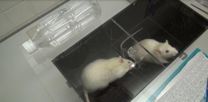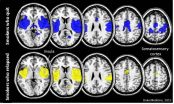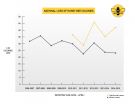(Press-News.org) WASHINGTON, D.C., May 13, 2015--Policymakers and practitioners have grown increasingly interested in measures of personal qualities other than cognitive ability--including self-control, grit, growth mindset, gratitude, purpose, emotional intelligence, and other beneficial personal qualities--that lead to student success. However, they need to move cautiously before using existing measures to evaluate educators, programs, and policies, or diagnosing children as having "non-cognitive" deficits, according to a review by Angela L. Duckworth and David Scott Yeager published in Educational Researcher, a peer-reviewed journal of the American Educational Research Association.
Personal skills are generally considered to be characteristics that facilitate goal-directed effort, healthy social relationships, and sound judgment and decision making. Basic scientific research reliably shows that measures of these characteristics predict success in school, work, and life. Just a few survey questions, or one session of observing whether a child can delay gratification, can predict educational attainment, income, crime, and happiness months or years later. But these measures are generally not ready for educational use.
"Given the intense visibility and enthusiasm around growth mindset, grit, and other personal skills, it is important for school leaders and policymakers to realize that while there is great benefit to studying and assessing these attributes, the measures should not, currently, be used for broader accountability purposes," said Duckworth, an associate professor of psychology at the University of Pennsylvania.
"Adapting and using these measures to decide whether a program is working for a school; how to promote or hire or fire teachers, principals, or staff; or how an institution can continually improve its practice and outcomes, are all different from what the measures were developed for," said Yeager, an assistant professor of psychology at the University of Texas at Austin. "Measures developed for very good research purposes do not necessarily translate into these very important educational purposes."
Duckworth and Yeager noted that:
Measurement of personal qualities for school accountability purposes is a major topic in current conversations on Capitol Hill related to reauthorization of the Elementary and Secondary Education Act. "There are policy questions about whether states should be required or even encouraged to compare schools on their levels of these qualities," said Yeager. "Our review says there is little or no scientific evidence that this should be done, and much evidence that it would yield misleading results."
Major federal education funders, like the Institute of Education Sciences and the Investing in Innovation Fund at the Department of Education, have included non-cognitive programs in their calls for proposals, requiring that program evaluation be carried out in many cases by examining changes in personal measures. "Our review provides direct guidance on how common measures will be misleading, and what kinds of measures will be better," said Yeager. "This has direct application for the validity of the scientific database regarding personal characteristics and for the quality of education science."
School administrators are increasingly interested in using growth mindset measures for hiring or promoting teachers. "Such measures cannot yet be used reliably for the assessment of educators, nor are they suitable for between-school accountability judgments," said Duckworth.
In their review, Duckworth and Yeager discussed the limitations and advantages of three common approaches to measuring personal qualities: self-report questionnaires administered to students, questionnaires administered to teachers about their students, and observation of student behavior on performance tasks.
"There really is no perfect measure for any aspect of personal skills. What we have are measures that have their distinct advantages and limitations. Developing better measures, and understanding which currently available measures are appropriate for which uses, are top priorities we should have as an education community," said Duckworth.
"We advise practitioners and policymakers to seek out the most valid measure for their intended purpose(s)," wrote the authors. "Whenever possible, we recommend using a plurality of measurement approaches. While time and money are never as ample as would be ideal, a multi-method approach to measurement can dramatically increase reliability and validity."
The authors encouraged further innovation in measurement development, including several "promising approaches" such as creating a suite of web-based, free, scalable "marshmallow test" tasks, or mining students' online learning behavior or written communication in real time for meaningful patterns of behavior. With the right investments in research and development, Duckworth and Yeager suggested that personal measures could become valuable tools for purposes of program evaluation and educators' improvement of classroom practices.
INFORMATION:
Funding Note
The review was made possible by grants to Duckworth from the National Institute on Aging, the Character Lab, the Bill and Melinda Gates Foundation, the Robert Wood Johnson Foundation, the Spencer Foundation, and the John Templeton Foundation, as well as grants to Yeager from the Raikes Foundation, the William T. Grant Foundation, and a fellowship from the Center for Advanced Study in the Behavioral Sciences.
About AERA
The American Educational Research Association (AERA) is the largest national professional organization devoted to the scientific study of education. Founded in 1916, AERA advances knowledge about education, encourages scholarly inquiry related to education, and promotes the use of research to improve education and serve the public good. Find AERA on Facebook and Twitter.
This release is available online: http://www.aera.net/Newsroom/NewsReleasesandStatements/ResearchersUrgeCautioninUsingMeasuresofStudents%E2%80%99%E2%80%9CNon-Cognitive%E2%80%9DSkillsforTeacherEvaluation,SchoolAccountability,orStudentDiagnosis/tabid/15945/Default.aspx
VIDEO: Duckworth and Yeager discuss implications: http://www.aera.net/LinkClick.aspx?link=http%3a%2f%2fyoutu.be%2f99DIYIkSg3c&tabid=15945&portalid=38&mid=38311
Coffee has gone from dietary foe to friend in recent years, partly due to the revelation that it's rich in antioxidants. Now even spent coffee-grounds are gaining attention for being chock-full of these compounds, which have potential health benefits. In ACS' Journal of Agricultural and Food Chemistry, researchers explain how to extract antioxidants from the grounds. They then determined just how concentrated the antioxidants are.
María-Paz de Peña and colleagues note that coffee -- one of the most popular drinks in the world -- is a rich source of a group ...
Several class-action lawsuits filed recently against the makers of flushable wet-wipes have brought to light a serious -- and unsavory -- problem: The popular cleaning products might be clogging sewer systems. But whether the manufacturers should be held accountable is still up in the air, according to an article in Chemical & Engineering News (C&EN), the weekly newsmagazine of the American Chemical Society.
Jessica Morrison, assistant editor at C&EN, reports that New York City alone claims to have spent more than $18 million over six years clearing wipes from its wastewater ...
Rats have more heart than you might think. When one is drowning, another will put out a helping paw to rescue its mate. This is especially true for rats that previously had a watery near-death experience, says Nobuya Sato and colleagues of the Kwansei Gakuin University in Japan. Their findings are published in Springer's journal Animal Cognition.
Recent research has shown that a rat will help members of its own species to escape from a tubelike cage. The helping rat will show such prosocial behavior even if it does not gain any advantage from it. To see whether these ...
DURHAM, N.C. - Smokers who are able to quit might actually be hard-wired for success, according to a study from Duke Medicine.
The study, published in Neuropsychopharmacology, showed greater connectivity among certain brain regions in people who successfully quit smoking compared to those who tried and failed.
The researchers analyzed MRI scans of 85 people taken one month before they attempted to quit. All participants stopped smoking and the researchers tracked their progress for 10 weeks. Forty-one participants relapsed. Looking back at the brain scans of the 44 ...
Beekeepers across the United States lost more than 40 percent of their honey bee colonies during the year spanning April 2014 to April 2015, according to the latest results of an annual nationwide survey. While winter loss rates improved slightly compared to last year, summer losses--and consequently, total annual losses--were more severe. Commercial beekeepers were hit particularly hard by the high rate of summer losses, which outstripped winter losses for the first time in five years, stoking concerns over the long-term trend of poor health in honey bee colonies.
The ...
MANHASSET, NY -- The Feinstein Institute for Medical Research, the research arm of the North Shore-LIJ Health System, and SetPoint Medical Inc., a biomedical technology company, today released the results of research on the therapeutic potential of vagus nerve stimulation. In a paper published by Bioelectronic Medicine, Kevin J. Tracey, MD, and his colleagues at the Feinstein Institute, explore how low-level electrical stimulation interacts with the body's nerves to reduce inflammation, a fundamental goal of bioelectronic medicine.
Prior to this study, it was not understood ...
Scientists at The University of Manchester have made an important discovery about how certain cells stick to each other to form tissue.
The team from the Faculty of Life Sciences studied how cells in the skin and heart are bound together through structures called desmosomes. They wanted to understand how these junctions between the cells in the tissue are so strong.
Desmosomes are specialised for strong adhesion. They bind the tissue cells together to resist the rigours of everyday life and their failure can result in diseases of the skin and heart, including sudden ...
A part of the performance degradation mechanism of the advanced, electrodeless, helicon plasma thruster with a magnetic nozzle, has been revealed by the research group of Dr. Kazunori Takahashi and Prof. Akira Ando at Tohoku University's Department of Electrical Engineering.
An electric propulsion device is a main engine, and a key piece of technology for space development and exploration. Charged particles are produced by electric discharge and accelerated, i.e. momentum is transferred to them via electromagnetic fields. The thrust force is equivalent to the momentum ...
Digital signatures are mechanisms for authenticating the validity or authorship of a certain digital message and they aim to be digital counterparts to real (or analog) signatures. The concept was introduced by Diffie and Hellman in 1976. Notice that, when certified, digital signatures have the same legal power as traditional signatures.
With the advent of quantum computation new threats to security became a near future reality and all known digital signatures schemes are vulnerable, compromising fundamental properties of signature schemes: authenticity and authorship ...
Chicago (13 May, 2015)- In the latest issue of the Bulletin of Atomic Scientists, published by SAGE, experts from the United States, Russia, and China present global perspectives on ambitious nuclear modernization programs that the world's nuclear-armed countries have begun.
In the latest edition of the Bulletin's Global Forum, Georgetown University professor Matthew Kroenig argues that:
"Failure to modernize would not contribute to disarmament - but more than that, it would be irresponsible. A crippled US nuclear force would embolden enemies, frighten allies, generate ...



